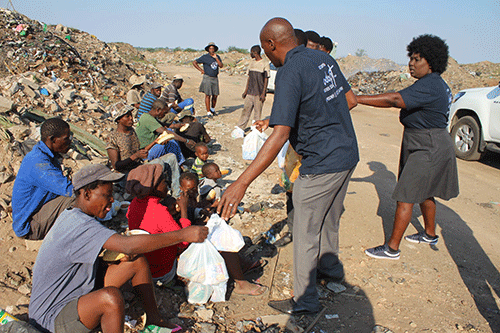According to the Food and Agriculture Organisation (FAO) of the United Nations in its March 2021 crop prospects and food situation quarterly global report, 441 000 Namibians are estimated to be food insecure and would be in need of humanitarian assistance between October 2020 and March 2021. The FAO stated that Namibia is among the 45 countries in need of external assistance for food.
The report said in Namibia there are shortfalls in staple food production, which have been exacerbated by the economic slowdown, which in turn was worsened by the Covid-19 pandemic. “Although the availability of food is adequate and stable, the negative effects of the Covid-19 pandemic, primarily income and job losses, have constrained households’ access to food,” reads the report.
FAO’s production outlook for Botswana, eSwatini, Lesotho, and Namibia, all countries that import a large share of their cereal needs, is favourable owing to good rains and which should result in average to above-average harvests expected to be attained.
Further, in South Africa, following two months of declines, wholesale prices of maize grain increased in January 2021 and were more than 20% above their year-earlier levels.
The recent uptick and overall higher prices were underpinned by spillover effects from the international market, where prices have risen sharply reflecting increasingly tight global supplies and a depreciation of the national currency.
In the import-dependent countries, the report stated, Botswana, eSwatini and Namibia, which source the bulk of their grain supplies from South Africa, saw prices of maize meal mostly stable in the last quarter of 2020, but higher than the previous year amid increasing import costs. The recently released report also noted that cereal output and import needs both rose in low-income food-deficit countries.
It estimates that aggregate cereal production by the 51 low-income food-deficit countries rose 3% in 2020 from the previous year to 502.4 million tonnes, as recoveries in southern Africa and the near East outweighed a decline in central Africa. However, aggregate cereal import requirements by the group in the 2020/21 marketing year are expected to rise to 74.1 million tonnes, with the Far East and West Africa sub-regions posting the largest additional needs.
According to the executive director in the agriculture ministry, Percy Misika, figures from the report refer to the lean period or the season starting from October 2020. This was when the harvest for the 2019/2020 cropping season was expected to have been depleted up to March 2021, by when the harvesting for the 2020/2021 cropping season was expected to start.
“With the measures undertaken to ensure farmers have access to subsidised ploughing, planting and weeding services, coupled with the provision of subsidised seeds and the reactivation of production at some of the green schemes, in addition to the very good rains received in most crop-growing regions of our country, there is hope that the situation of those that were reported to be food insecure during the period would improve for the better,” said Misika.
– mndjavera@nepc.com.na


